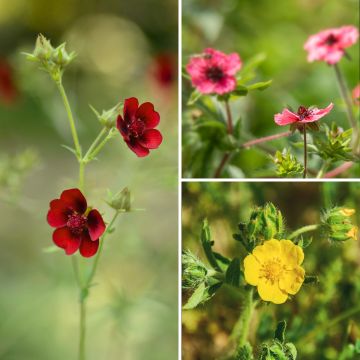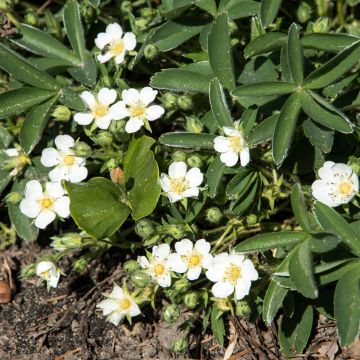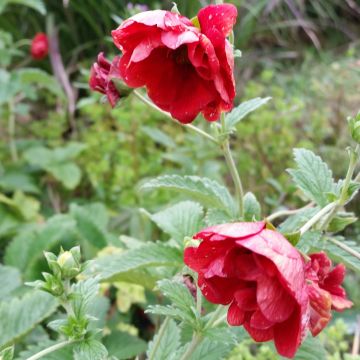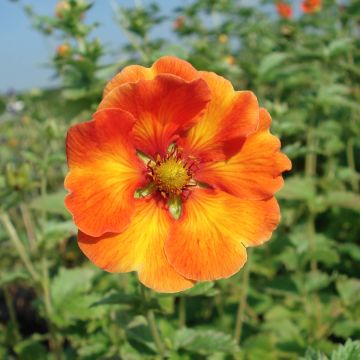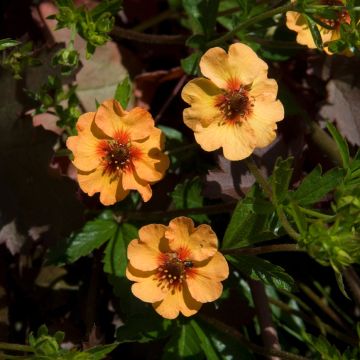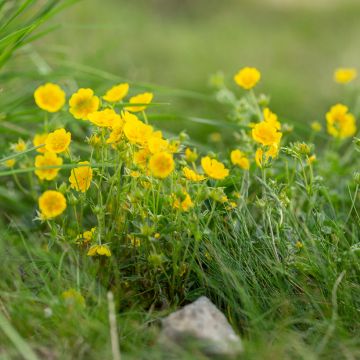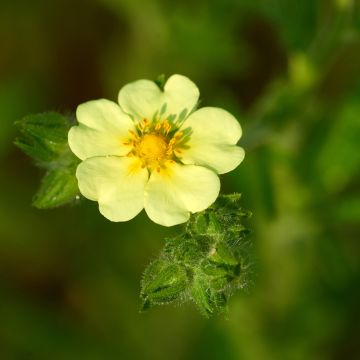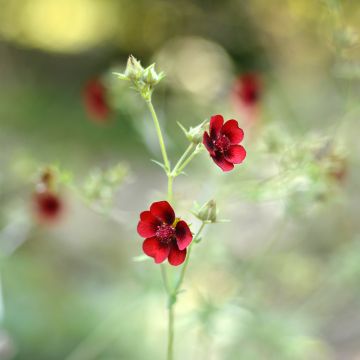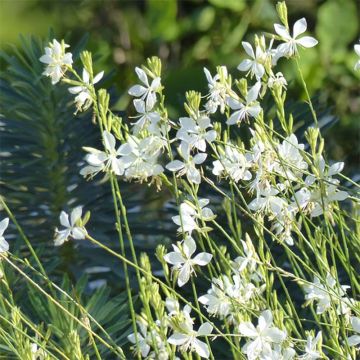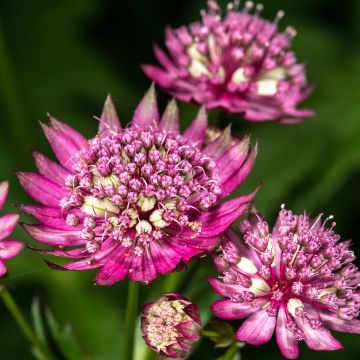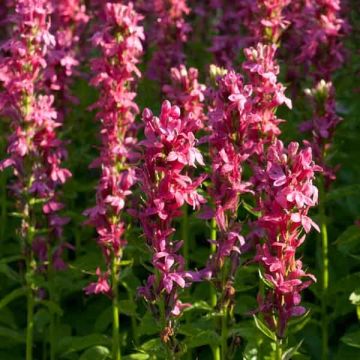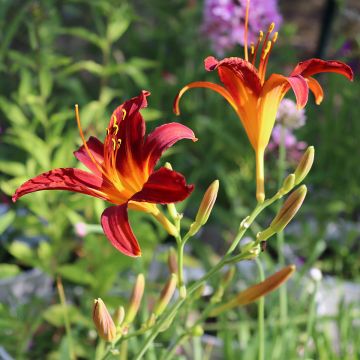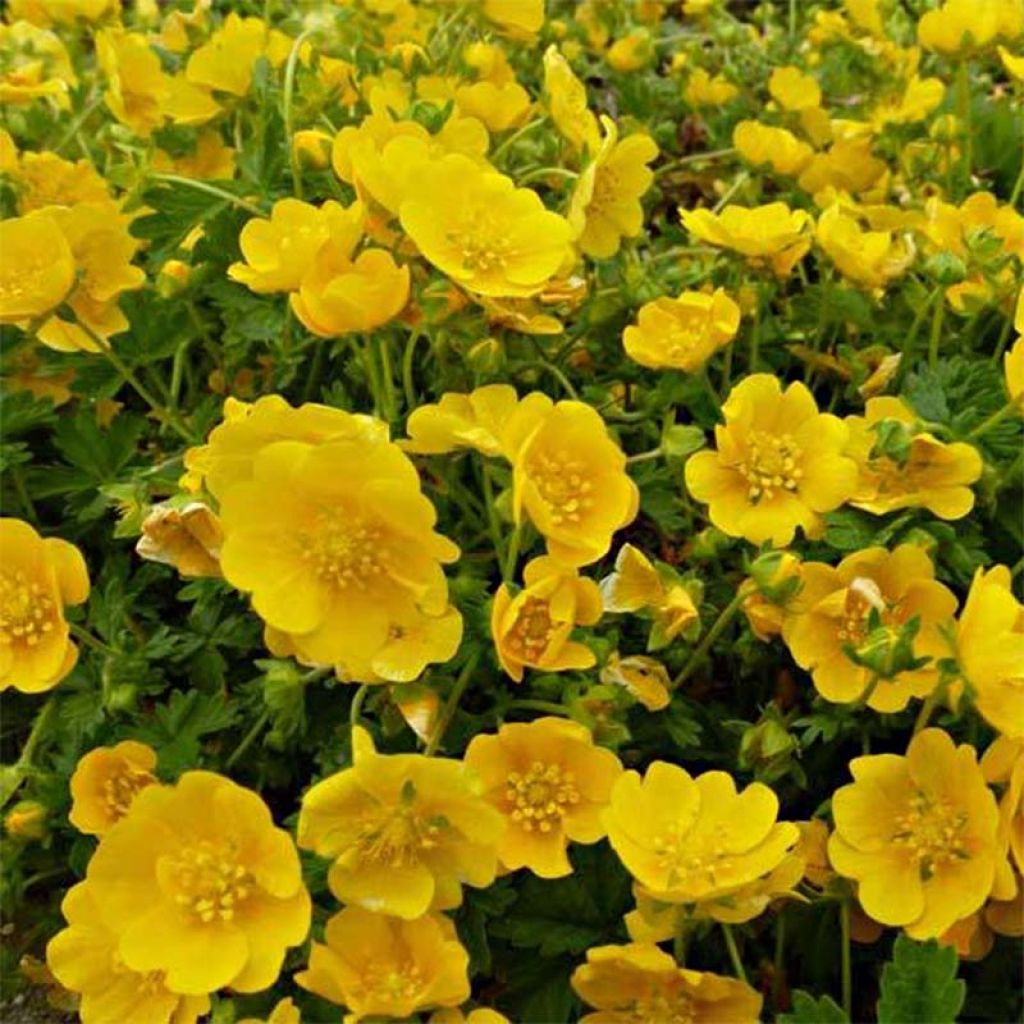

Potentilla cultorum Orange - Cinquefoil
Potentilla cultorum Orange - Cinquefoil
Potentilla x cultorum Orange
Potentilla, Cinquefoil
Special offer!
Receive a €20 voucher for any order over €90 (excluding delivery costs, credit notes, and plastic-free options)!
1- Add your favorite plants to your cart.
2- Once you have reached €90, confirm your order (you can even choose the delivery date!).
3- As soon as your order is shipped, you will receive an email containing your voucher code, valid for 3 months (90 days).
Your voucher is unique and can only be used once, for any order with a minimum value of €20, excluding delivery costs.
Can be combined with other current offers, non-divisible and non-refundable.
Why not try an alternative variety in stock?
View all →This plant carries a 12 months recovery warranty
More information
We guarantee the quality of our plants for a full growing cycle, and will replace at our expense any plant that fails to recover under normal climatic and planting conditions.
Would this plant suit my garden?
Set up your Plantfit profile →
Description
The hybrid Potentilla 'Orange' is a beautiful perennial plant that offers small open cup-shaped flowers throughout the summer, in a vibrant orange colour that contrasts beautifully with a very handsome shiny green and silky foliage reminiscent of strawberry leaves. It forms a spreading cushion, magnificent as a border or in the foreground of flower beds. This hybrid variety is easy to grow in full sun or partial shade, in any ordinary soil that is not too dry.
Potentilla x cultorum Orange is a horticultural creation resulting from the cross-breeding of different species of Potentilla. Like strawberries, to which it bears some resemblance, it belongs to the Rosaceae family. It is a perennial plant with creeping stems that forms a round and dense clump, in the shape of a cushion measuring 30 to 40 cm (12 to 16 in) in height and spreading over 40 to 60 cm (16 to 24 in). Its foliage is as soft to the eye as it is to the touch. The lower leaves are divided into five toothed leaflets; the upper leaves into three leaflets, and covered with silky, bright green, satin-like hairs. The flowering period extends from June to August, with a possible second bloom in autumn if the plant is pruned. The flowers appear on branched stems at the tips of the shoots, resembling small wild roses measuring 2 to 3 cm (1 in) in diameter, displaying a very bright orange colour that fades slightly over time. The centre of the flower is darker. This perennial will reach its full potential after 4 to 5 years of growth.
Potentilla Orange, like other herbaceous cinquefoils, is a true star of borders: it embellishes the layout of pathways and softens the design of a partially shaded terrace, when paired with paniculate saxifrages, heucheras or small sedums. It is also very beautiful in a not overly dry rockery, accompanied by pasqueflowers, Waldsteinia ternata, Fragaria Pink Panda, grey artemisias, and teucriums, etc. It can also be associated with small grasses such as Pennisetum orientale, Heliotrichon (oat grass) and fescues, or mixed with simple perennials like cupid's darts (Catananche) and Centaurea pulcherrima to create colourful and charming scenes. It also grows very well in pots, with regular watering.
Report an error about the product description
Potentilla cultorum Orange - Cinquefoil in pictures
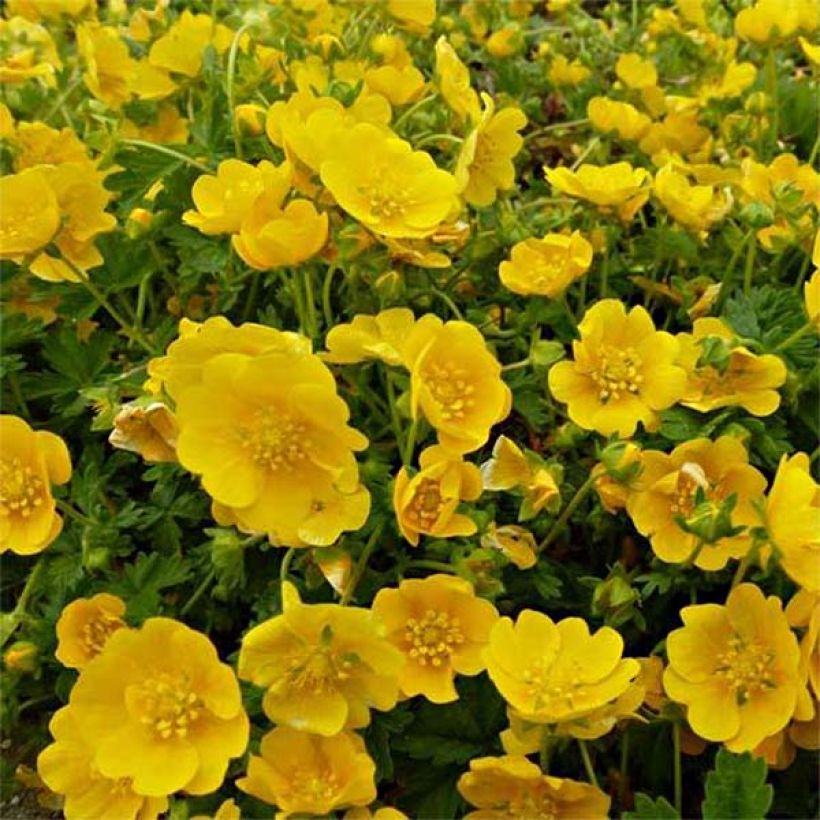

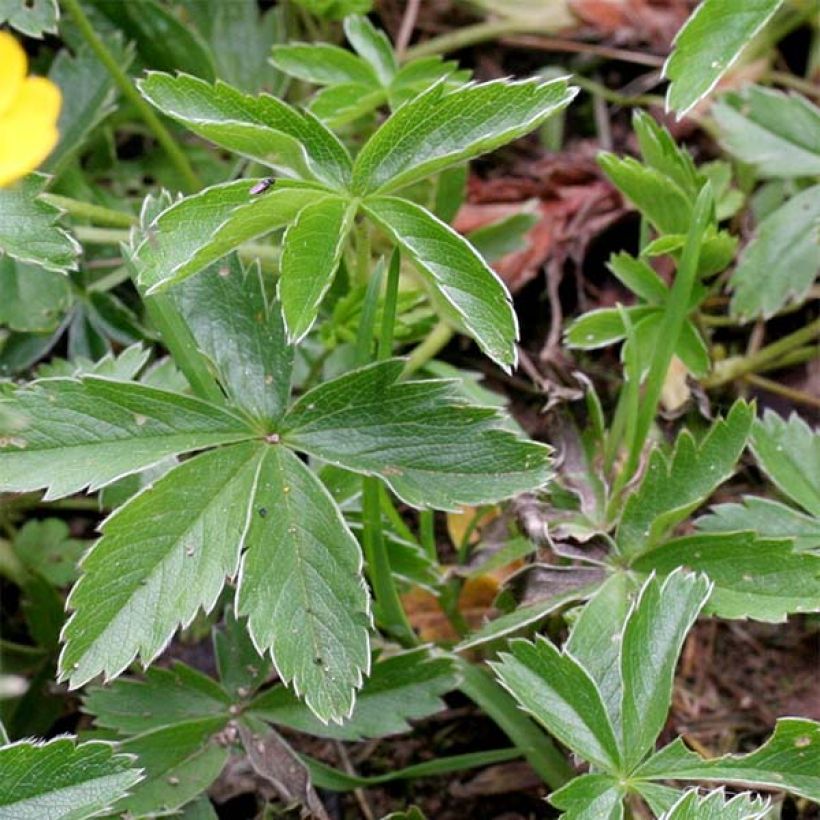

Flowering
Foliage
Plant habit
Botanical data
Potentilla
x cultorum
Orange
Rosaceae
Potentilla, Cinquefoil
Cultivar or hybrid
Other Perennial Potentilla
View all →Planting and care
Potentilla Orange is a robust plant that is disease-free and easy to grow. It can be planted in any well-drained soil, adapts well to poor, rocky or occasionally dry soils, even limestone, and can even withstand occasional flooding. This plant prefers sunny exposures, but too much direct sunlight may fade the colour of its flowers. A south-facing exposure or a shaded location during the hottest hours of the day would be suitable. Cut off faded flowers at the end of August to renew the foliage and promote a second blooming.
Planting period
Intended location
Care
Planting & care advice
This item has not been reviewed yet - be the first to leave a review about it.
Similar products
Haven't found what you were looking for?
Hardiness is the lowest winter temperature a plant can endure without suffering serious damage or even dying. However, hardiness is affected by location (a sheltered area, such as a patio), protection (winter cover) and soil type (hardiness is improved by well-drained soil).

Photo Sharing Terms & Conditions
In order to encourage gardeners to interact and share their experiences, Promesse de fleurs offers various media enabling content to be uploaded onto its Site - in particular via the ‘Photo sharing’ module.
The User agrees to refrain from:
- Posting any content that is illegal, prejudicial, insulting, racist, inciteful to hatred, revisionist, contrary to public decency, that infringes on privacy or on the privacy rights of third parties, in particular the publicity rights of persons and goods, intellectual property rights, or the right to privacy.
- Submitting content on behalf of a third party;
- Impersonate the identity of a third party and/or publish any personal information about a third party;
In general, the User undertakes to refrain from any unethical behaviour.
All Content (in particular text, comments, files, images, photos, videos, creative works, etc.), which may be subject to property or intellectual property rights, image or other private rights, shall remain the property of the User, subject to the limited rights granted by the terms of the licence granted by Promesse de fleurs as stated below. Users are at liberty to publish or not to publish such Content on the Site, notably via the ‘Photo Sharing’ facility, and accept that this Content shall be made public and freely accessible, notably on the Internet.
Users further acknowledge, undertake to have ,and guarantee that they hold all necessary rights and permissions to publish such material on the Site, in particular with regard to the legislation in force pertaining to any privacy, property, intellectual property, image, or contractual rights, or rights of any other nature. By publishing such Content on the Site, Users acknowledge accepting full liability as publishers of the Content within the meaning of the law, and grant Promesse de fleurs, free of charge, an inclusive, worldwide licence for the said Content for the entire duration of its publication, including all reproduction, representation, up/downloading, displaying, performing, transmission, and storage rights.
Users also grant permission for their name to be linked to the Content and accept that this link may not always be made available.
By engaging in posting material, Users consent to their Content becoming automatically accessible on the Internet, in particular on other sites and/or blogs and/or web pages of the Promesse de fleurs site, including in particular social pages and the Promesse de fleurs catalogue.
Users may secure the removal of entrusted content free of charge by issuing a simple request via our contact form.
The flowering period indicated on our website applies to countries and regions located in USDA zone 8 (France, the United Kingdom, Ireland, the Netherlands, etc.)
It will vary according to where you live:
- In zones 9 to 10 (Italy, Spain, Greece, etc.), flowering will occur about 2 to 4 weeks earlier.
- In zones 6 to 7 (Germany, Poland, Slovenia, and lower mountainous regions), flowering will be delayed by 2 to 3 weeks.
- In zone 5 (Central Europe, Scandinavia), blooming will be delayed by 3 to 5 weeks.
In temperate climates, pruning of spring-flowering shrubs (forsythia, spireas, etc.) should be done just after flowering.
Pruning of summer-flowering shrubs (Indian Lilac, Perovskia, etc.) can be done in winter or spring.
In cold regions as well as with frost-sensitive plants, avoid pruning too early when severe frosts may still occur.
The planting period indicated on our website applies to countries and regions located in USDA zone 8 (France, United Kingdom, Ireland, Netherlands).
It will vary according to where you live:
- In Mediterranean zones (Marseille, Madrid, Milan, etc.), autumn and winter are the best planting periods.
- In continental zones (Strasbourg, Munich, Vienna, etc.), delay planting by 2 to 3 weeks in spring and bring it forward by 2 to 4 weeks in autumn.
- In mountainous regions (the Alps, Pyrenees, Carpathians, etc.), it is best to plant in late spring (May-June) or late summer (August-September).
The harvesting period indicated on our website applies to countries and regions in USDA zone 8 (France, England, Ireland, the Netherlands).
In colder areas (Scandinavia, Poland, Austria...) fruit and vegetable harvests are likely to be delayed by 3-4 weeks.
In warmer areas (Italy, Spain, Greece, etc.), harvesting will probably take place earlier, depending on weather conditions.
The sowing periods indicated on our website apply to countries and regions within USDA Zone 8 (France, UK, Ireland, Netherlands).
In colder areas (Scandinavia, Poland, Austria...), delay any outdoor sowing by 3-4 weeks, or sow under glass.
In warmer climes (Italy, Spain, Greece, etc.), bring outdoor sowing forward by a few weeks.






























